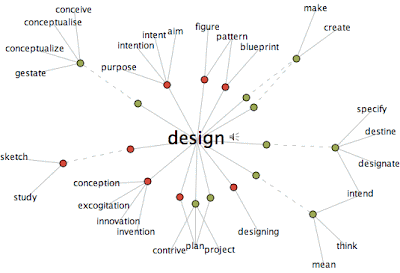Brainstorming is a rapid, spontaneous idea-generating activity in which one or more people participate. It is a great tool for quickly amassing many possible solutions to a problem or issue.
Anyone can brainstorm. It is fun work.
How to conduct a brainstorming session – Begin with a comfortable space and all necessary tools, including large sheets of paper or flip chart pads (3-M makes a pad of large Post-It Notes pads, which are nice to work with because they don’t damage the wall and they can be moved around easily), a set of colored markers like the thick Sanford Super Sharpie permanent markers, tape, digital camera, small multi-colored Post-It Notes, and open wall surfaces.
When brainstorming in a group setting, assign one person to document the session. Ideally, this person should be able to easily visualize ideas in drawings, diagrams and words. Designers and Graphic Facilitators excell at this activity. It’s an additional luxury to ask a second person to lead the group. Their primary responsibilities include initial introduction and activity launch, keeping the group focused, redirecting the group (if necessary), and keeping time.
Tasks for the solo idea-generator are combined.
Basic ground rules:
1. Begin with a clearly stated problem statement. Create a sentence that defines the problem. For example, “Provide better customer service for families with young children.”
2. Have fun. Be outrageous and silly in the ideas. Reserve critical, analytical and negative thinking for another time. Think expansively. Freely associate. Build upon other ideas.
3. Freely, quickly and clearly document ideas. Use exact descriptors, avoiding general statements or one-word responses.
4. Stay on-topic and focused on the problem.
5. Strive to generate a lot of ideas – 100 ideas is not an unreasonable goal. Rapidly document ALL ideas in words and sketches, displaying them so all participants can see. Number the ideas.
6. During the ideation, think about the problem in different ways, including various viewpoints, scenarios, and conditions.
7. Brainstorm for 30-40 minutes.
Using this concept-generating technique alone or in a group setting is a productive way of loosening-up and amassing large quantities of ideas.
Further explore Brainstorming and creativity references
and creativity references at Amazon.
at Amazon.
Want some random inspiration from the masses? Check out the tags  brainstorming, innovation and
brainstorming, innovation and  ideas at Technorati.
ideas at Technorati.

 Amy Leidtke
Amy Leidtke